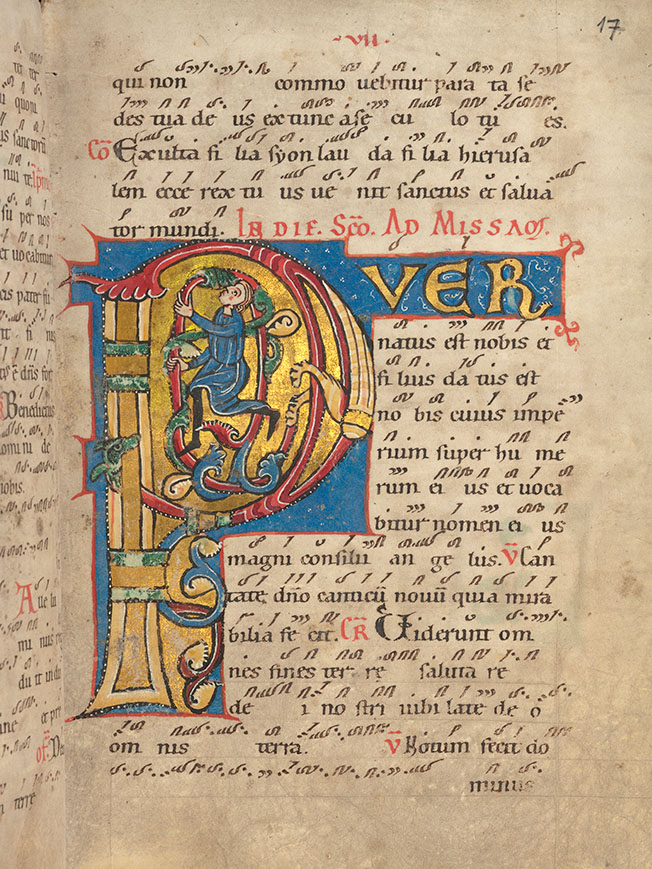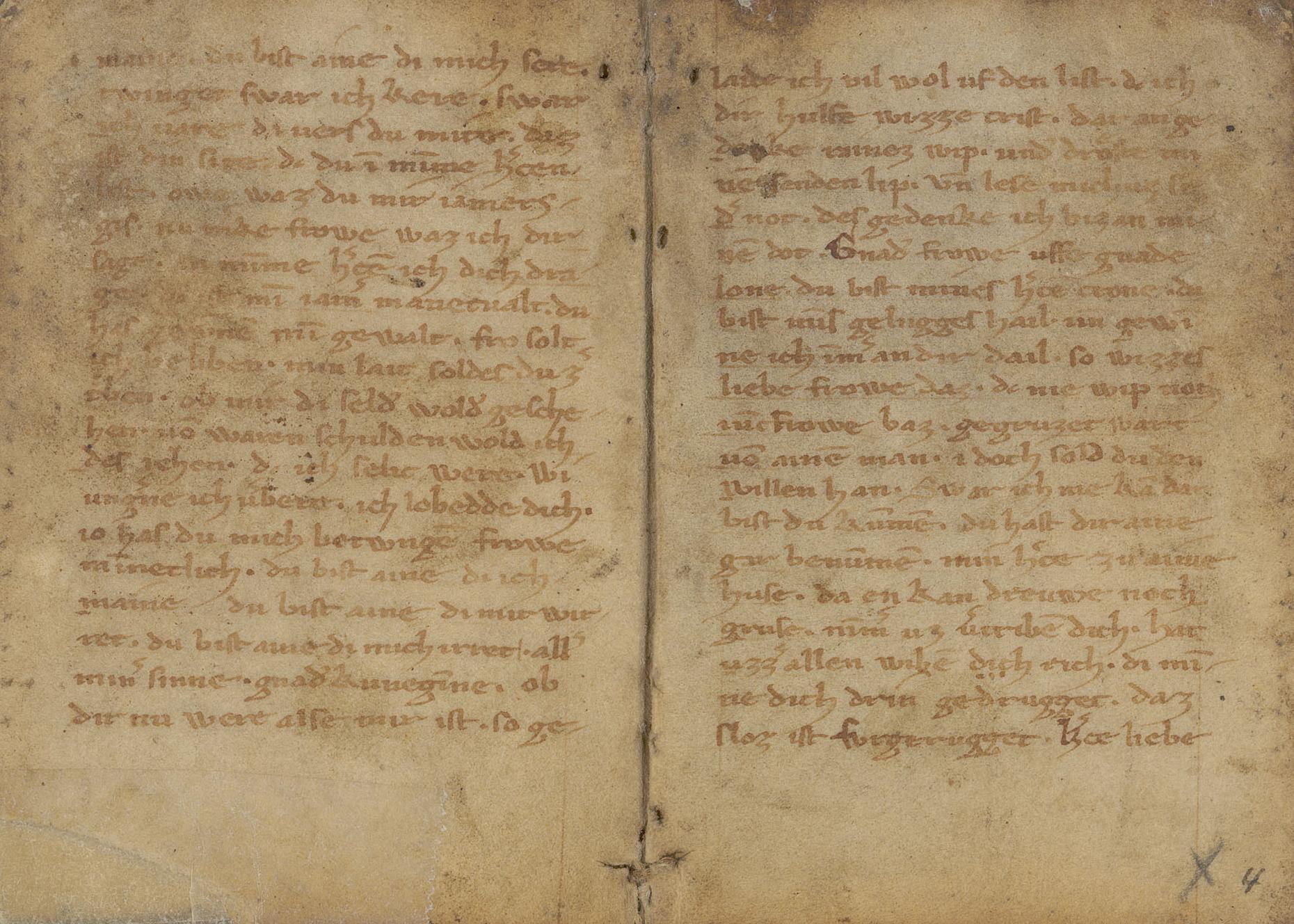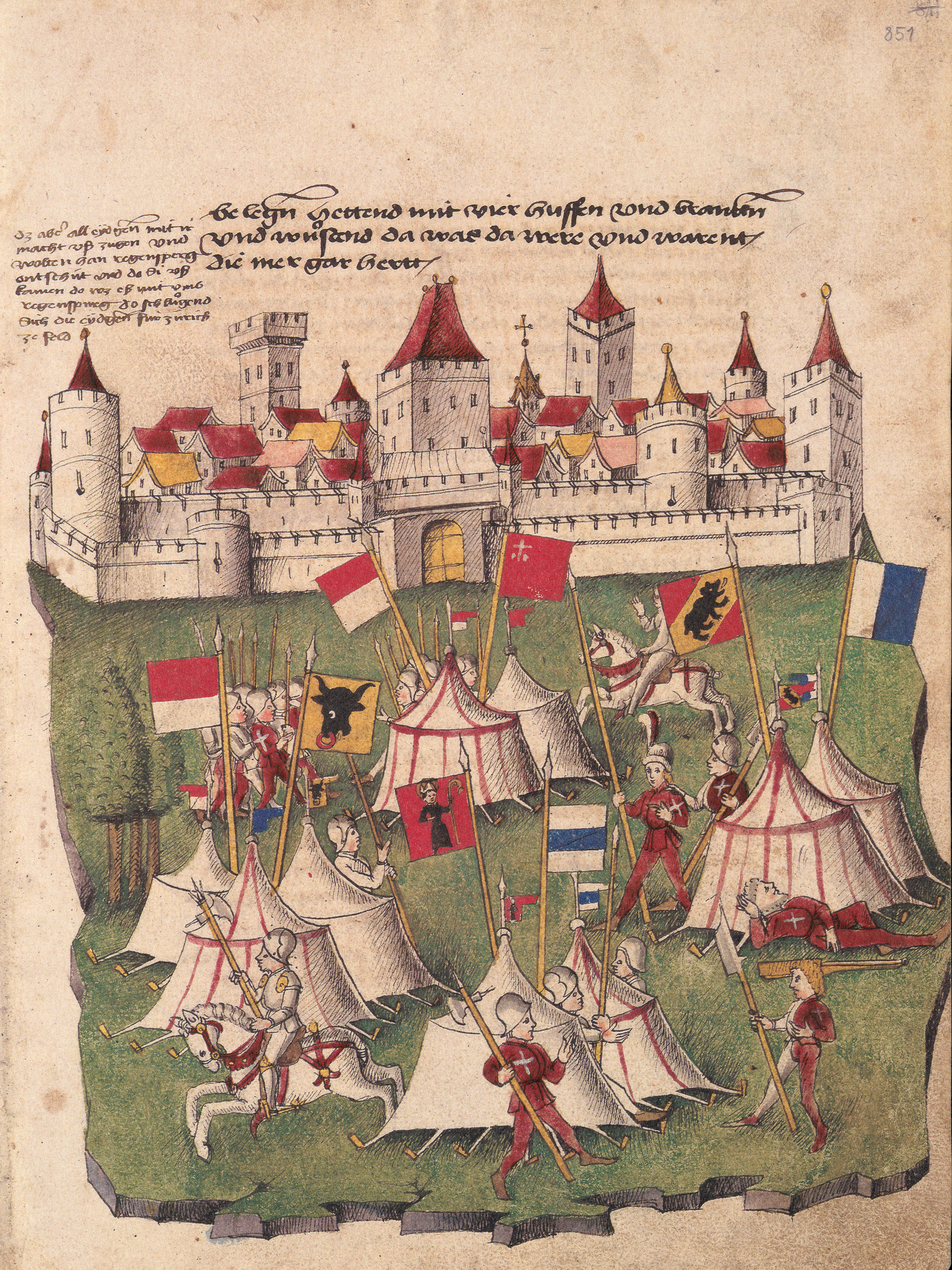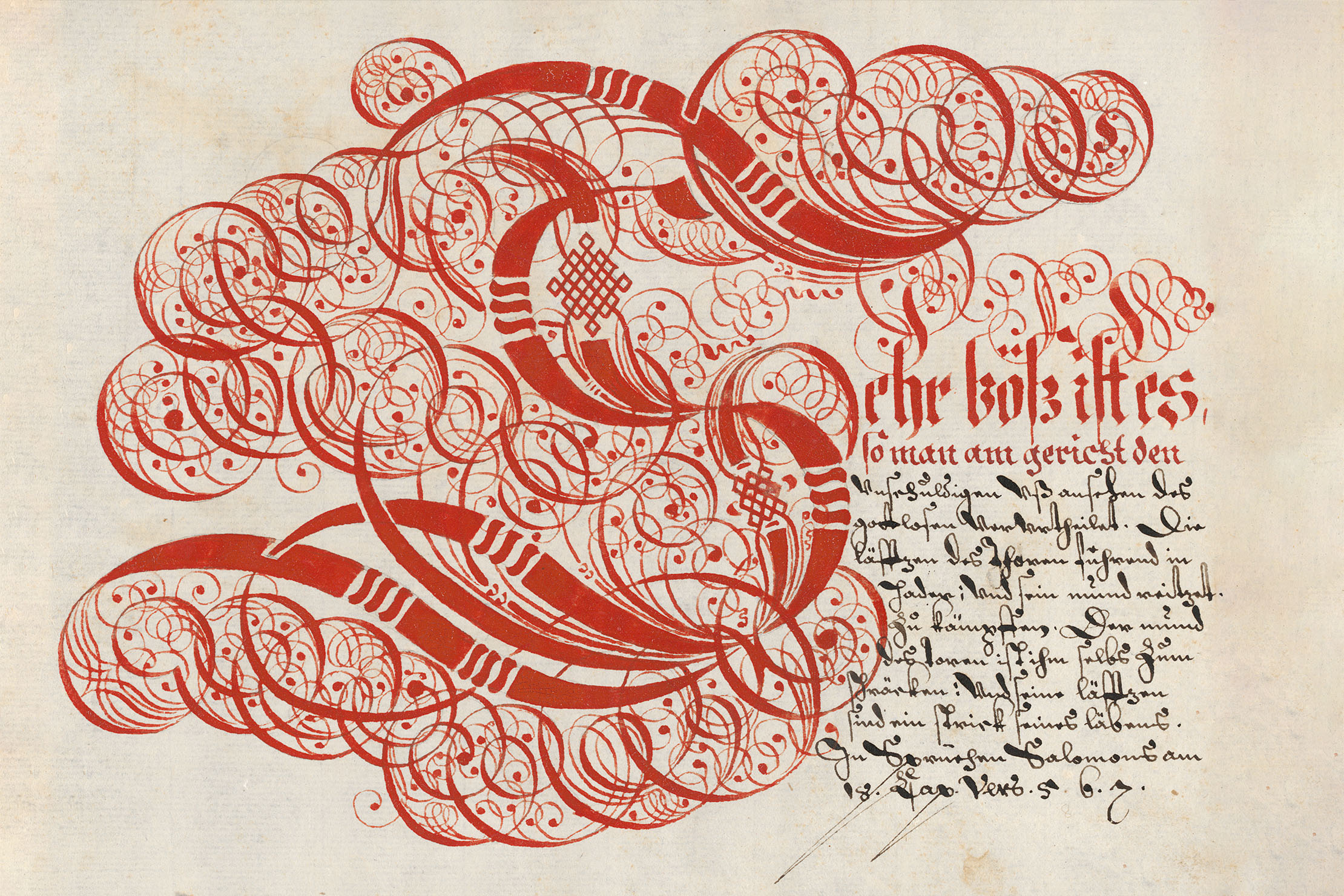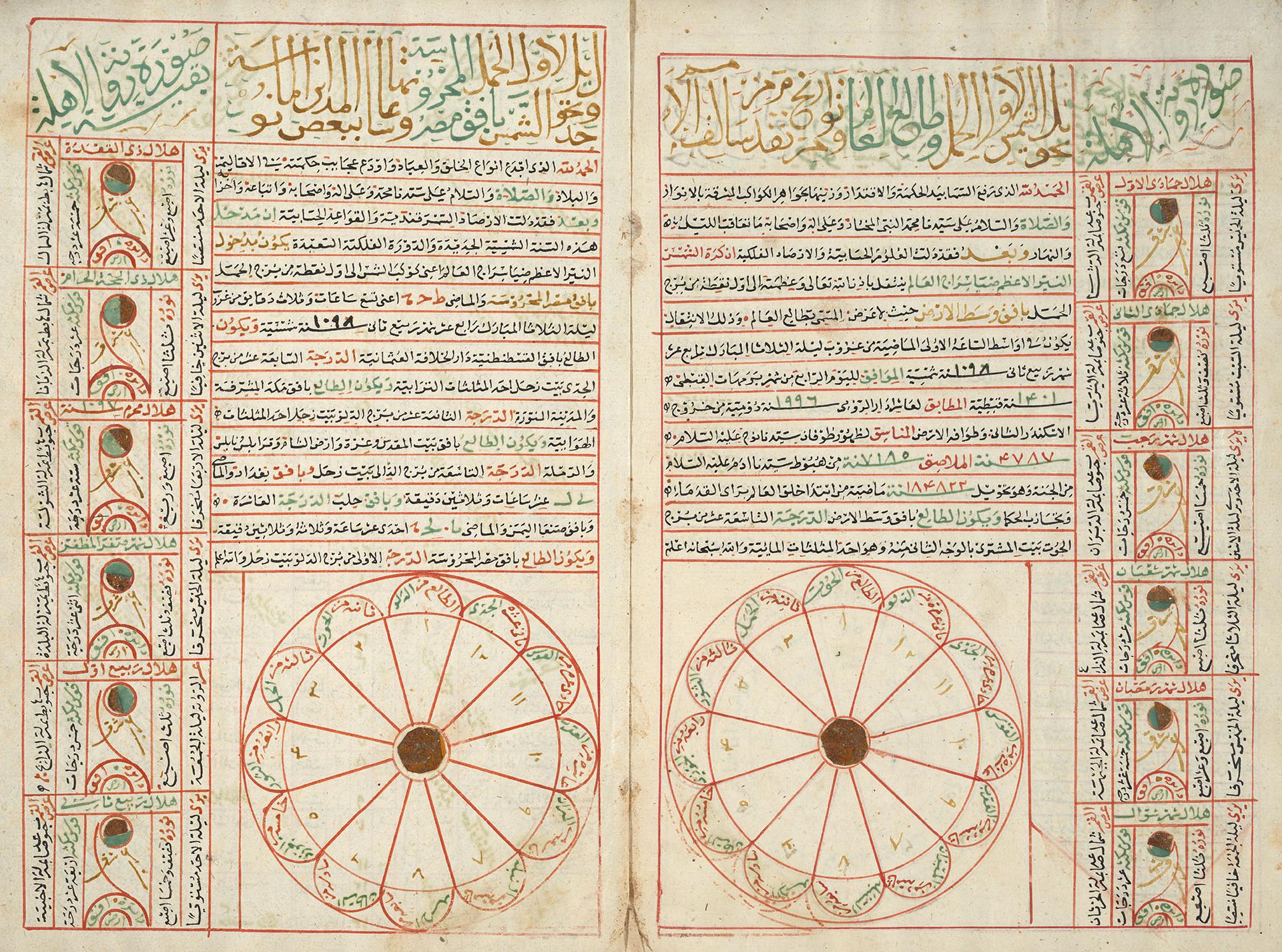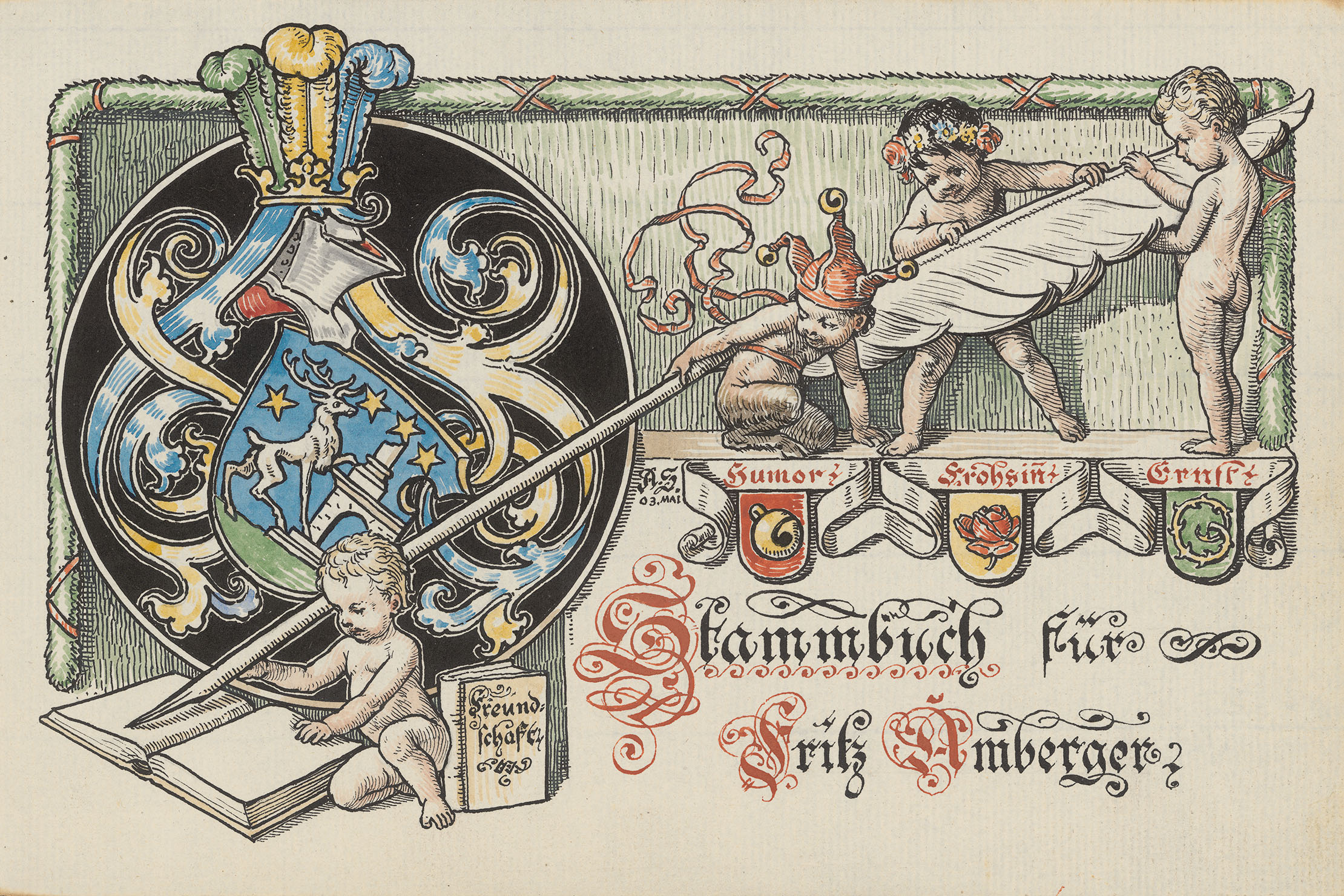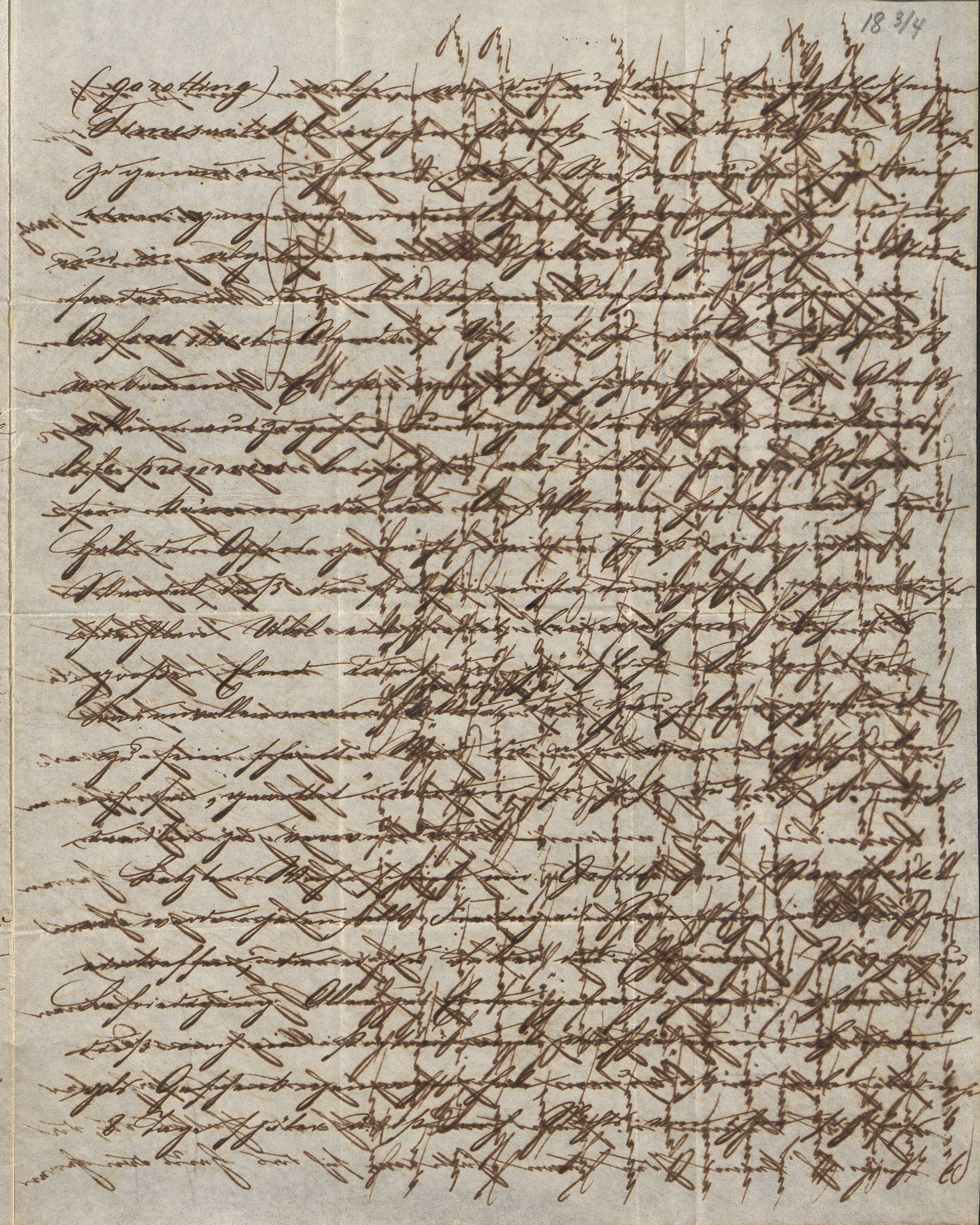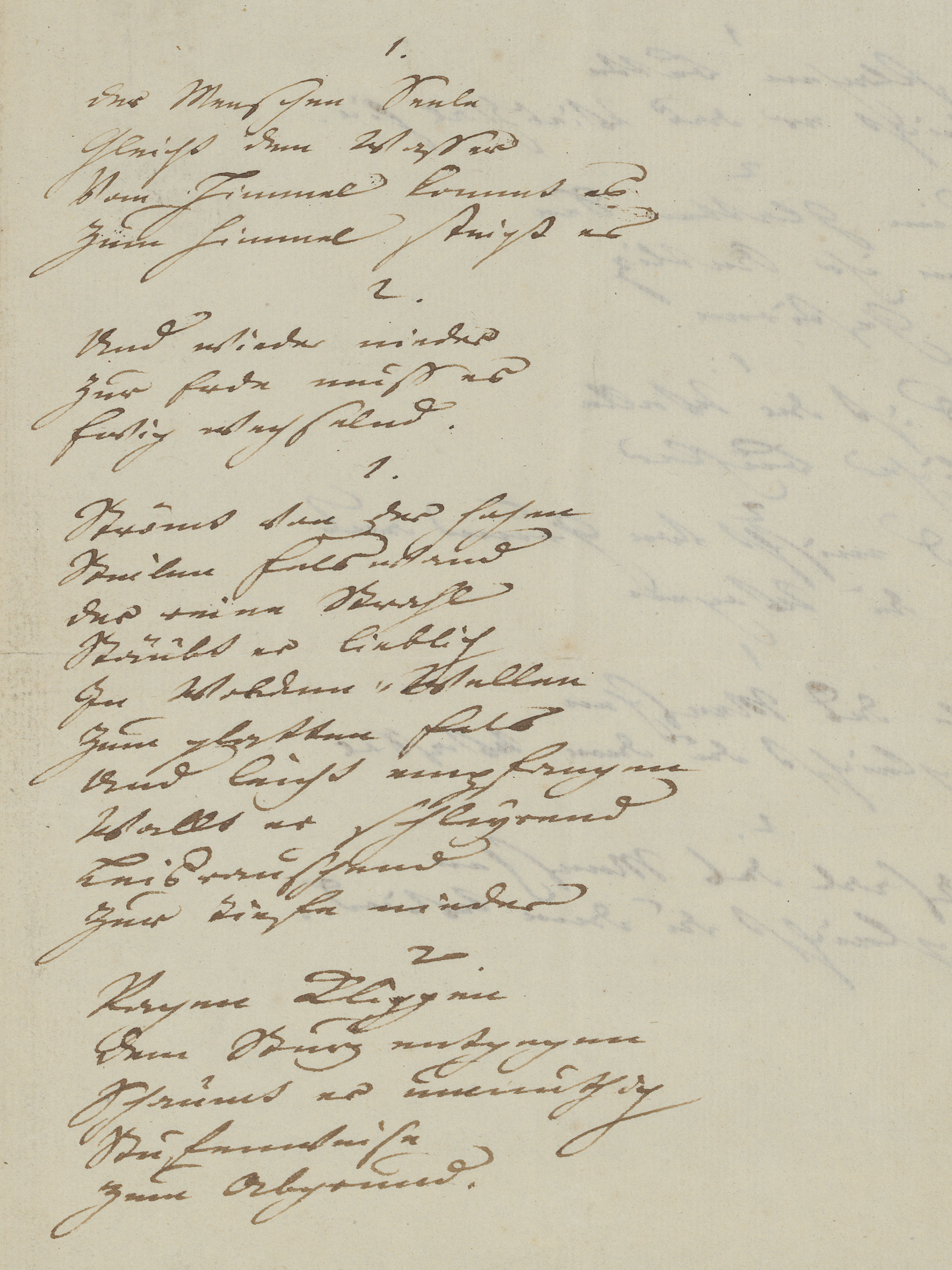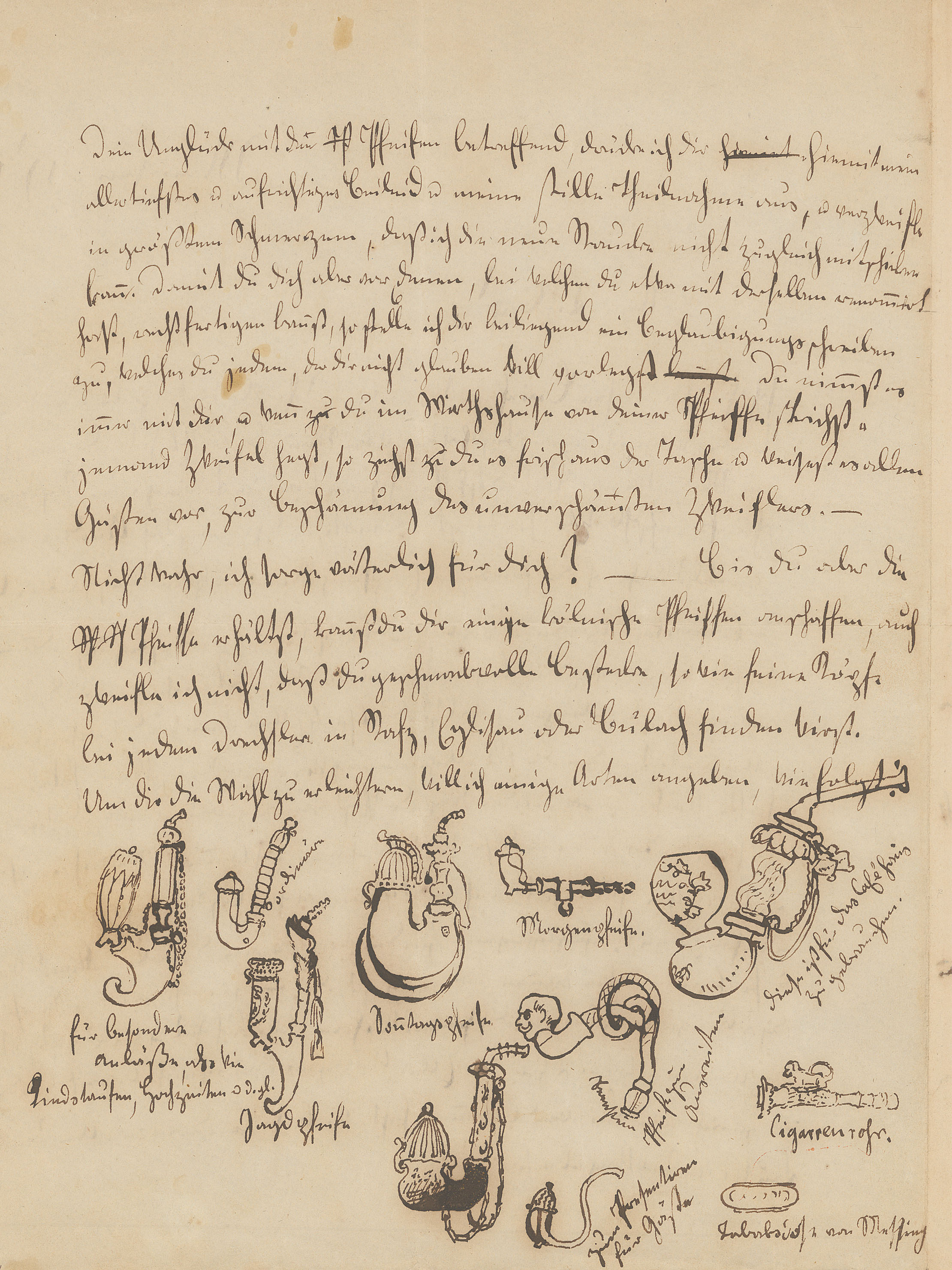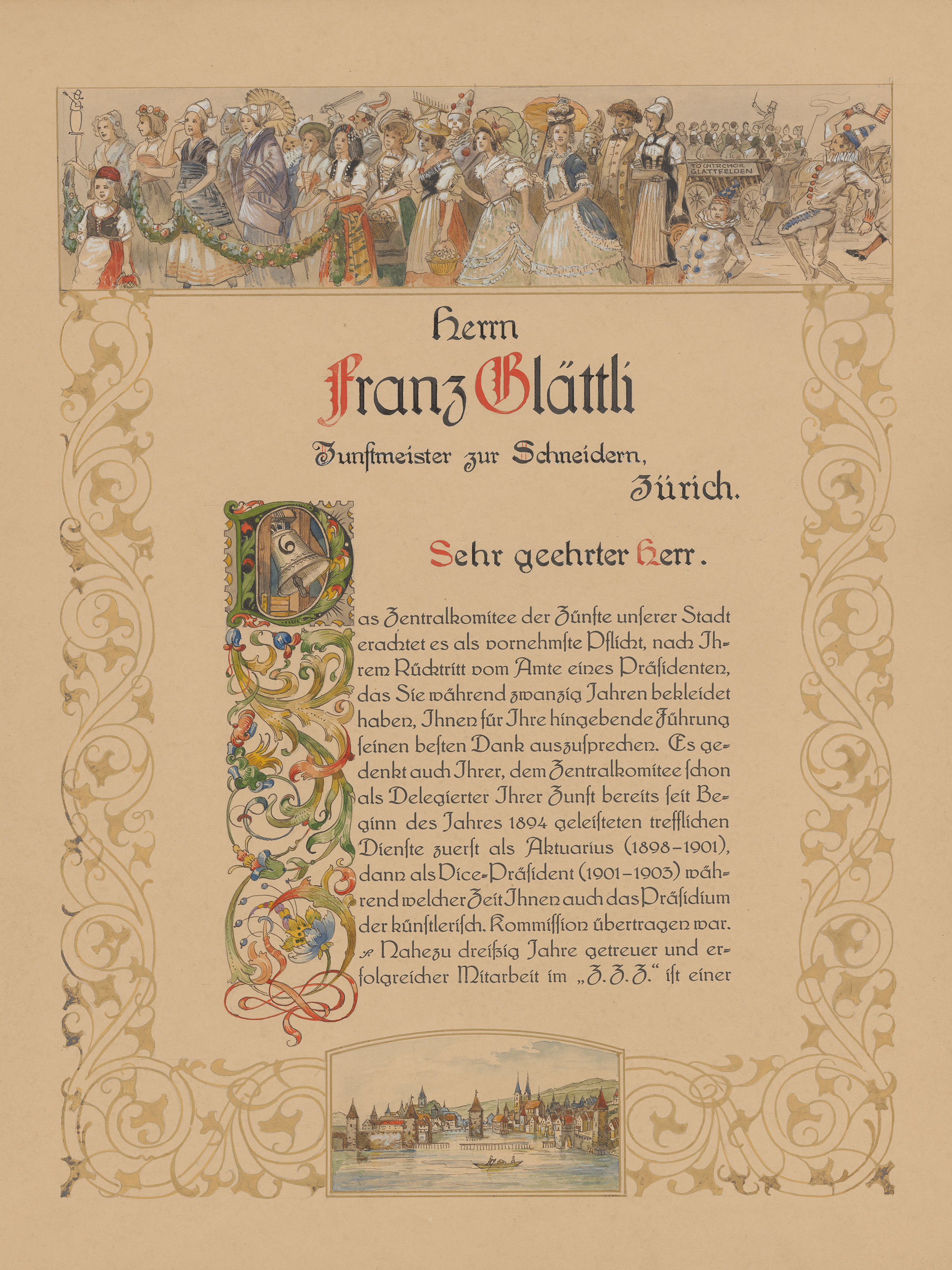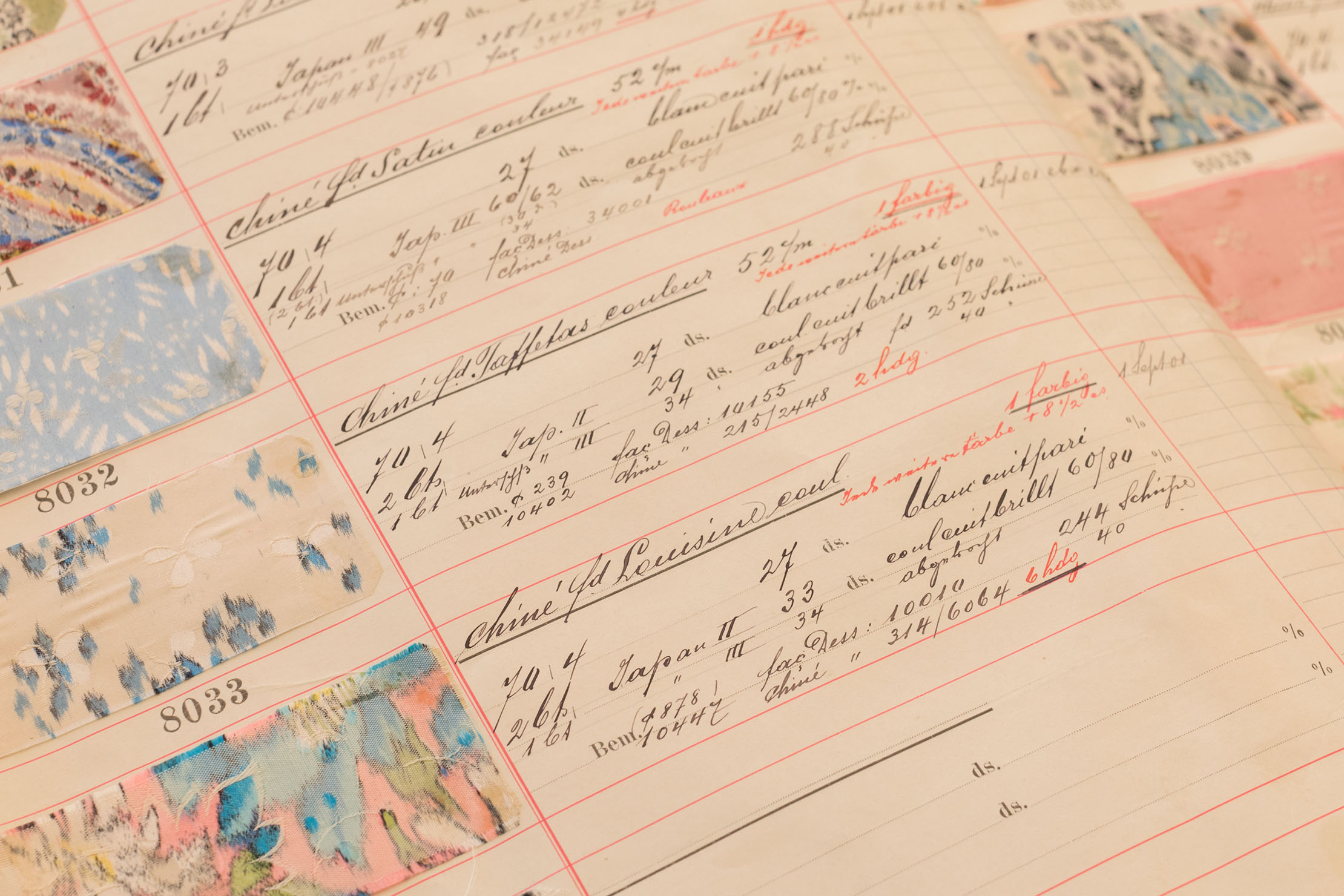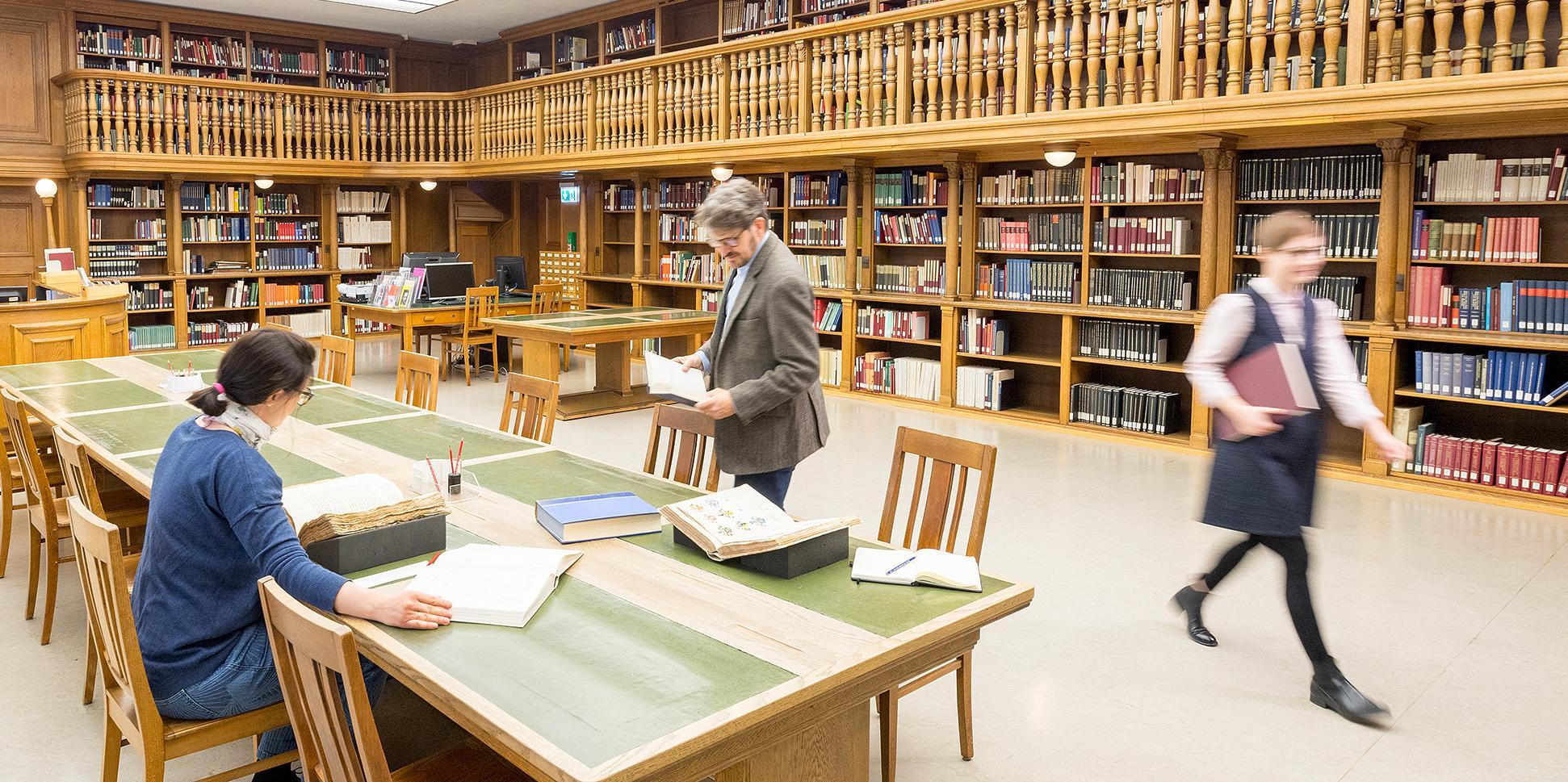
Manuscripts, estates and archive materials
The manuscript collection preserves cultural memory in the form of manuscripts, archive materials and estates from medieval monastic culture through the Reformation and the Enlightenment to the present day.
Cultural heritage from the Middle Ages to the present
We hold documents from the 5th to the 21st centuries, including some 650 medieval manuscripts, (early) modern manuscripts with a particular focus on Zurich and Reformation history and the Enlightenment, over 700 personal estates, letter and autograph manuscript collections, deeds and diplomas as well as numerous archives of historical, political, cultural and social associations from the 17th to the 21st centuries.
We recommend starting your search for manuscripts in the ZBcollections archive portal.
The Manuscript Department reading room is on the 2nd floor of the old building. It offers 16 workspaces, a modern microform reader, WiFi and a PC for your research. The reference library contains literature on bibliology, library science, papermaking and filigranology, bookbinding research, codicology, catalogues of libraries in Switzerland and abroad, as well as reference works on genealogy and heraldry. The available titles can be found in the Rechercheportal.
We help you to decode history
In addition to manuscripts in Greek, Latin, German, French, English and Italian you will also find Hebrew (Heidenheim Collection), Asiatic and Oriental manuscripts and even secret languages and codes. We organise regular presentations and group tours on request, in which we present our unique cultural property. Our training courses will teach you how to decode old manuscripts and handle archive materials.
Manuscripts
Holdings
In addition to written documents the collection also includes drawings, graphic works and prints as well as objects and curiosities. We specifically acquire Turicensia and items that complement our main holdings.
Medieval treasures
The older treasures of the manuscript collection include:
- A Greek psalter on purple vellum dating from the 6th century
- A Bible from Tours (c. 830)
- The Reichenau Verbrüderungsbuch (early 9th/10th century)
- The Rheinau Psalter (c. 1260)
- The portolan atlas by Pietro Vesconte of Genoa (1321)
- The illustrated Chronicle of the World by Rudolf von Ems (c. 1340/50)
- The alchemist tract “Aurora consurgens” (15th century)
Zurich and Swiss historiography
Resources relevant to Zurich and Swiss historiography include major chronicles (Edlibach, Tschachtlan, Justinger, Schilling, Bullinger) and in particular the estate of the Reformer Heinrich Bullinger and the news report collection of Johann Jakob Wick. A further focus of the collection is the timespan from the early modern era and the Enlightenment to the Helvetic Period.
Letters, autograph manuscripts and deeds
Prominent items among the hundreds of thousands of letters are the collections of Johann Heinrich Hottinger (1620–1667) and Johann Jakob Simler (1716–1788) and the correspondence of Johann Jakob Scheuchzer (1672–1733), Johann Jakob Bodmer (1698–1783), Johann Caspar Lavater (1741–1801), Johann Jakob Hess (1741–1828) and Johann Heinrich Pestalozzi (1746–1827). Many more individual letters and collections of letters can be found under the call number Ms. Briefe, in both the personal estates and archives. Also worthy of mention are the diploma and deed collections and the important collection of libri amicorum dating from the 16th to the 20th centuries.
Handwritten documents from the 18th to the 20th centuries can be found in the separate autograph manuscript collections, which are named after their previous owners (Bebler, A. E. Cherbuliez, Girsberger, Ott). This collection is continued under Autogr. ZB. The autograph manuscript collections are listed in the Rechercheportal and the ZBcollections archive portal.
Personal estates
We hold over 700 estates of writers, artists, musicians, politicians, philosophers and scientists. In addition to documents from famous individuals you will also find contemporary accounts from mothers, pupils, workers, farmers, etc. All estates are listed in the ZBcollections archive portal.
→ Overview of personal estates, collections and documents on individuals
Archives
The manuscript collection documents both the public and the private history of Zurich and its inhabitants in some 200 archives of associations, publishers, companies, families and other institutions. They include, for example, the archives of the silk company Robt. Schwarzenbach & Co., the Neue Zürcher Zeitung, the Zurich guild ‘zum Weggen’ and the Escher and Hirzel families of councillors. All the archive holdings are listed in the ZBcollections archive portal and some can be searched for using printed catalogues and internal directories.
Gallery
Cataloguing
Information sheet & user regulations
The sheer variety of manuscripts and archive materials makes using a range of finding aids essential. We have compiled an information sheet on searching and using to help you.
Online research
- www.zbcollections.ch (estates, archives and individual manuscripts)
- www.recherche-portal.ch (mainly letters)
Printed catalogues
- Medieval manuscripts, by Leo Cunibert Mohlberg. Zurich 1952 (file 115,818 KB)
- More recent manuscripts since 1500 (including older manuscripts on Swiss history), by Ernst Gagliardi and Ludwig Forrer, introduction and index by Jean-Pierre Bodmer. Zurich 1982. (file 92,937 KB)
- Family archives, by Jean-Pierre Bodmer. Zurich 1996.
- The Arabic, Turkish and Persian manuscripts. Described by Tobias Nünlist, assisted by Andreas Kaplony and Tobias Heinzelmann. Wiesbaden 2008.
- Hebrew manuscripts in Switzerland: catalogue of Hebrew manuscripts in Swiss public libraries, by Joseph Prijs. Basel 2018.
- Handbook of Historic Bookholdings, by Urs B. Leu. Hildesheim 2013. Vol. 3.
Digitised documents
If you have any questions about research, we will be happy to advise you in our manuscript reading room.
Manuscripts
History of the holdings
Established in 1964, the Manuscript Department holds materials dating back to the city library (from 1629) and the cantonal library (from 1835) as well as holdings of the former canon monastery of St. Felix and Regula at the Grossmünster, Zurich’s oldest library. In 1863 the cantonal library acquired the important medieval parchment and modern era paper manuscripts from the dissolved Benedictine monastery at Rheinau. In 1917 the manuscript holdings of the city and cantonal libraries and others (Natural History Society, Medical Library, Law Library, etc.) were brought together in the Zentralbibliothek Zürich. The family archives, as well as a number of guild archives and company archives taken over from the city library in 1900, are still being expanded.
More information about the history of the holdings can be found in the manuscript catalogues of Leo Cunibert Mohlberg and Ernst Gagliardi / Ludwig Forrer.
